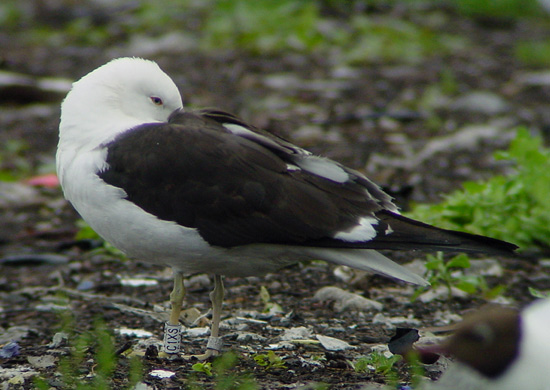 nominate Lesser Black-backed Gull (L. f. fuscus)
nominate Lesser Black-backed Gull (L. f. fuscus)
(last update:
Amir Ben Dov (Israel)
Hannu Koskinen (Finland)
Mars Muusse (the Netherlands)
fuscus 1cy July
fuscus 1cy Aug
fuscus 1cy Sept
fuscus 1cy Oct
fuscus 1cy Nov
fuscus 1cy Dec
fuscus 2cy Jan
fuscus 2cy Feb
fuscus 2cy March
fuscus 2cy April
fuscus 2cy May
fuscus 2cy June
fuscus 2cy July
fuscus 2cy Aug
fuscus 2cy Sept
fuscus 2cy Oct
fuscus 2cy Nov
fuscus 2cy Dec
fuscus 3cy Jan
fuscus 3cy Feb
fuscus 3cy March
fuscus 3cy April
fuscus 3cy May
fuscus 3cy June
fuscus 3cy July
fuscus 3cy August
fuscus 3cy Sept
fuscus 3cy October
fuscus 3cy Nov
fuscus 3cy Dec
fuscus 4cy Jan
fuscus 4cy Feb
fuscus 4cy March
fuscus 4cy April
fuscus 4cy May
fuscus 4cy June
fuscus 4cy July
fuscus 4cy Aug
fuscus 4cy Sept
fuscus 4cy Oct
fuscus 4cy Nov
fuscus 4cy Dec
fuscus ad Jan
fuscus ad Feb
fuscus ad March
fuscus ad April
fuscus ad May
fuscus ad June
fuscus ad July
fuscus ad Aug
fuscus unringed Aug
fuscus ad Sept
fuscus ad Oct
fuscus ad Nov
fuscus ad Dec
Larus fuscus fuscus 3cy C1XS, July 11-16 2003, Tampere, Finland (61.33N 24.59E).
C1XS was ringed in Luopio, Finland; ringed as pullus on July 01 2001 by Risto Juvaste.
Recorded at Tampere:
2003-05-21, 2003-05-24, 2003-05-28, 2003-05-29, 2003-05-30, 2003-05-31, 2003-06-05, 2003-06-14, 2003-06-16, 2003-06-18, 2003-06-20, 2003-06-22, 2003-06-28, 2003-07-05, 2003-07-06, 2003-07-11, 2003-07-15, 2003-07-16, 2003-07-20, 2003-07-21, 2003-07-23, 2003-07-24, 2003-07-26, 2003-07-31, 2003-08-02, 2003-08-03, 2003-08-09, 2003-08-12.
After August 02 2003, it wasn't seen again at Tampere dump despite intense visits and may have moved further south from that date on.
Larus fuscus fuscus in 2cy often returns with completely replaced primaries and secondaries. In 3cy, fuscus more often shows a clear division between fresh inner primaries and older outer primaries, the inner primaries often showing neat white tips and the outer primaries often second generation-like with rounded tips and paler bleached brown. The arrested moult in the primaries is often reflected in the secondaries and (to a less extend) in the tail-feathers as well. The older tail-feathers (often R5 is older) still show a broad dark sub-terminal band.
3cy fuscus often have some black markings on the bill, which is otherwise much adult-like, with a clear red gonydeal spot. The colour of the naked parts are adult-like as well.
The scapulars in 3cy are often completely adult-like, lacking internal patterns; plain blackish grey with a mahogany hue on the older feathers. Most wing-coverts and tertials are adult-like blackish grey as well, but often 3cy birds show some very bleached pale brown wing-coverts, normally in the greater covert bar and in the upper rows of the lesser coverts. These bleached wing-coverts accentuate the jumpy sequence in the last wing-covert moult cycles, as there is often no clear pattern in location of these bleached feathers. Head and body feathers normally are snow-white by July.
C1XS was ringed in Finland, now in 3cy. This 3cy fuscus has arrested the primary moult at P5, leaving a clear division between P5 and P6. The outer primaries are dark brown with only a very small mirror on P10. In the folded tail, the rectrices appear fresh with pretty neat tips and are white without any black markings. However, as the tail is spread, R3 proves to have a broad black sub-terminal band, as can found commonly in early required 3rd generation tail-feathers. Note the dark markings on the bill.



